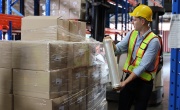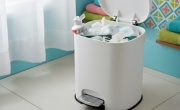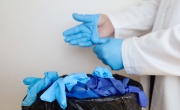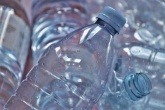Lego backtracks: Is recycled plastic more sustainable than virgin materials?
Danish toy maker Lego has abandoned its plans to produce its bricks using 100 per cent recycled plastic after projections have suggested that the transition would increase its carbon footprint.
 With the aim to increase the sustainability of its production process, Lego first unveiled a prototype brick produced using recycled plastic from discarded bottles back in 2021, announcing plans to expand this across its entire product portfolio by the year 2030.
With the aim to increase the sustainability of its production process, Lego first unveiled a prototype brick produced using recycled plastic from discarded bottles back in 2021, announcing plans to expand this across its entire product portfolio by the year 2030.
However, following two years of research and expanding its sustainability department to over 150 staff, the company has indicated that transitioning from the acrylonitrile butadiene styrene (ABS) – currently used to create over 80 per cent of its bricks – to recycled PET would cause an increase in emissions across the product’s lifecycle.
Speaking to the Financial Times, Niels Christensen, CEO of Lego stated: “In the early days, the belief was that it would be easier to find this magic material or this new material.” He conceded "[But] that doesn’t seem to be [the case]. We tested hundreds and hundreds of materials. It’s just not been possible to find a material like that”.
During current production processes, ABS requires approximately two kg of petroleum to create one kg of plastic, which Lego had hoped to reduce through the adoption of recycled PET.
Commenting on the setback, Lego's Head of Sustainability, Tim Brooks, told the Financial Times: “In order to scale production [of recycled PET], the level of disruption to the manufacturing environment was such that we needed to change everything in our factories. After all that, the carbon footprint would have been higher. It was disappointing.”
Is recycled PET more sustainable than virgin materials?
The move from Lego to abandon its plans to transition to recycled PET comes despite numerous life-cycle assessments indicating its environmental advantages over virgin materials.
The recycling of PET bottles is achieved by first collecting PET from households before granulating or shredding the material into flakes or granules at a processing centre. Following this, the materials are melted, washed and decontaminated to remove impurities such as post-consumer migrated substances. This is then turned into plastic pellets before being sent to firms in the packaging industry for the manufacturing of new products.
Studies have revealed the use of recycled PET pellets can offer over a 60 per cent reduction in global warming potential over the use of virgin materials.
Additionally, several life-cycle assessments have highlighted that the use of PET flakes instead of granulated PET may deliver superior environmental performance – estimates suggest for every kilogram of recycled PET flake used over virgin materials, greenhouse gas emissions and energy consumption can be reduced by 71 per cent and 84 per cent respectively.
Despite this, Lego’s own research has indicated that the use of recycled PET is not suitable for their own products. Due to the need to achieve the same levels of safety and durability currently yielded from their ABS bricks, Lego’s research indicated that the use of recycled PET would require extra ingredients, with Tim Brooks telling the Financial Times that the additional energy needed to process and dry the materials rendering its sustainability gains obsolete.
How does Lego plan to increase its sustainability?
Following the shelving of its plans to use recycled PET, Lego has reaffirmed its commitment to making its bricks more sustainable, announcing plans to triple its spending on sustainability by the year 2025 in a move that Lego bosses admit may impact profit margins.
Changing strategy, the Danish toy giant is now seeking recycled and bio-based solutions for the constituent parts of ABS in order to make its products more sustainable rather than moving towards 100 per cent recycled plastic. .
Lego asserts that this new direction is the right one and is sufficient to help support the company in meeting its target of reducing total emissions by 37 per cent by the year 2032.
Alongside this, Lego has also launched its ‘Replay’ programme – a takeback scheme which reuses the unwanted bricks of consumers and repurposes them into new sets. The programme has currently launched within the USA and Canada with plans to expand into Europe next year.
Commenting on this new strategic direction, Brooks told the Financial Times: “It’s better to reuse than recycle. So we’re looking at a circular business model - how do we earn revenue from recircling bricks? It’s quite a shift in thinking and ideas.”






